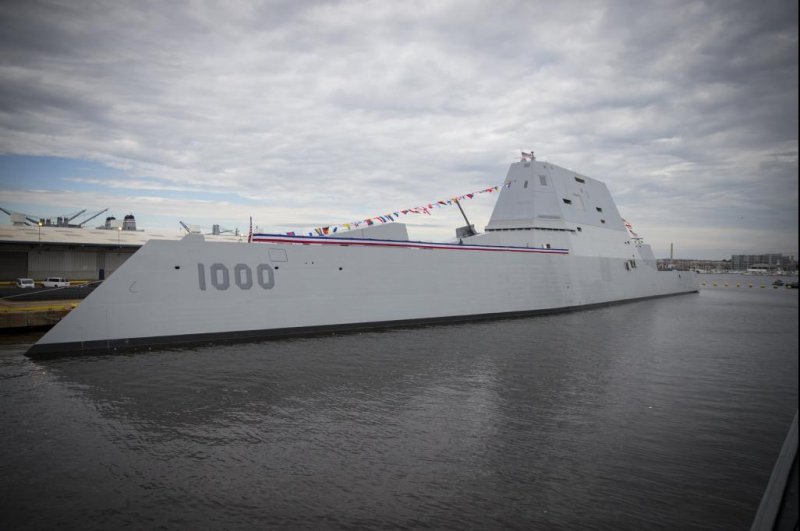The USS Zumwalt at Canton Port Services in Baltimore, Md. U.S. Navy photo
Aug. 10 (UPI) -- Rolls-Royce Marine North America is receiving a $27.3 million contract for parts and engineering services on power plants for DDG 1000 Zumwalt destroyers.
The contract provides for item orders, mounting equipment and other services for DDG 1000 gas-turbine generators. The generators are the destroyer's main source of electric power.
The work will be conducted in Indianapolis, Ind., and Walpole, Mass., with a projected completion date of September 2022, with $1 million in 2017 Navy shipbuilding and conversion funds obligated already.
The DDG 1000 Zumwalt-class destroyer is a stealth surface combatant under development by the U.S. Navy, with three ships built. It has a composite superstructure designed to make it difficult to detect by radar and sonar and a fully electric drive.
The vessels mount two Advanced Gun Systems that were originally designed to use the Long Range Land Attack Projectile with a range of over 60 miles. The high price tag of the ammunition has led the Navy to consider using the Raytheon Excalibur 155mm GPS-guided round instead, which would require extensive modifications to the AGS.
It also has the Advanced Vertical Launch System for Tomahawk cruise missiles and Standard series surface-to-air missiles as well as two Mk 46 30mm Gun Weapons Systems for point defense against high-speed surface targets.
It's power plants are designed for future weapons systems like electromagnetic railguns and lasers, which would require huge amounts of electricity to operate.
The Zumwalt-class has faced a number of development delays and cost overruns and the Navy has decided to limit its production to the current three vessels. The vessels are expected to begin active deployment by 2021.















